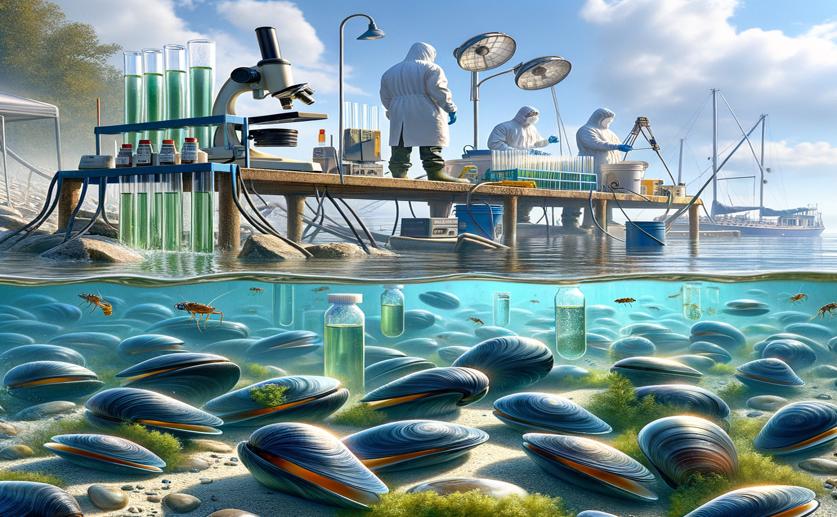
Monitoring Drug Pollutants in the Great Lakes Through Mussels
Jenn Hoskins
8th March, 2024

Image Source: Natural Science News, 2024
Key Findings
- Study in Great Lakes found mussels contain various human drugs, like antibiotics and antidepressants
- The highest levels of these drugs were not near sewage plants, suggesting other sources like runoff
- Mussels had mixtures of 4-28 different drugs, showing widespread pollution complexity
EnvironmentHealthMarine Biology
References
Main Study
1) An assessment and characterization of pharmaceuticals and personal care products (PPCPs) within the Great Lakes Basin: Mussel Watch Program (2013-2018).
Published 5th March, 2024
https://doi.org/10.1007/s10661-023-12119-3
Related Studies
2) Evaluation of Complex Mixture Toxicity in the Milwaukee Estuary (WI, USA) Using Whole-Mixture and Component-Based Evaluation Methods.
3) Anticancer drugs in wastewater and natural environments: A review on their occurrence, environmental persistence, treatment, and ecological risks.
4) Occurrence and risk assessment of typical PPCPs and biodegradation pathway of ribavirin in wastewater treatment plants.



 4th March, 2024 | Jim Crocker
4th March, 2024 | Jim Crocker